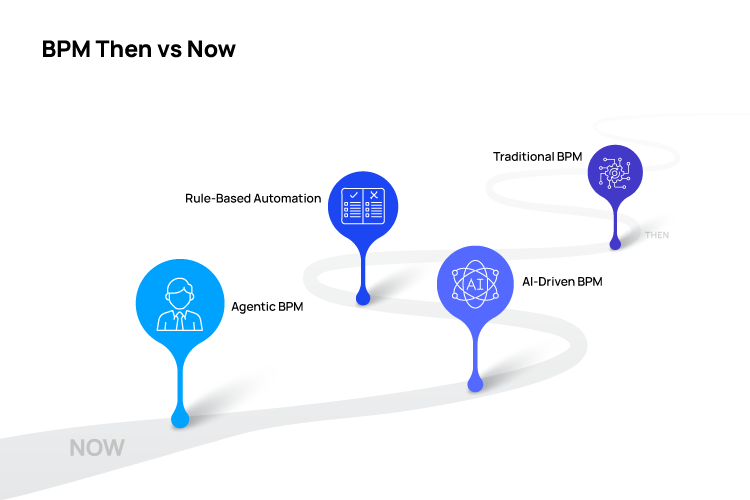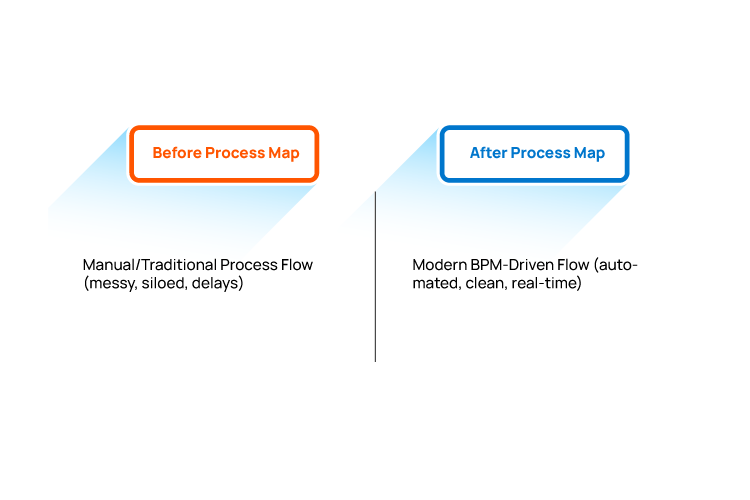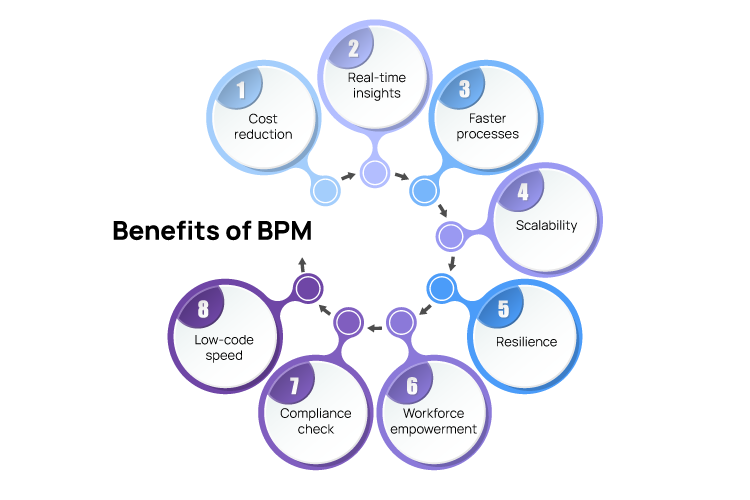

ACL Digital
5 Minutes read
Why BPM Remains Critical for Digital Agility in 2025
The digital workplace of 2025 is rapidly evolving, with modern BPM transforming back-office functions into agile, adaptable operations. The disruption across the landscape will build more expectations from customers while their competitors are actively aligning BPM with their strategic, operational, and innovation goals. Businesses should henceforth embrace change as an opportunity for sustaining agility if all their processes are under the umbrella of the organizational vision and are allowed to change direction when that vision changes due to external changes. Technological advances in automation, AI, and cloud have fueled the new-age BPM to steer businesses into resilient, fast, and decision-making movements.

Hyperautomation: BPM’s Acceleration Layer
Hyperautomation welds together Robotic Process Automation (RPA),Artificial Intelligence (AI), and Machine Learning (ML) into the process lifecycle transformation. BPM, in turn, proclaims to manage from end-to-end human decision cycles intelligibly combining human intelligence with a digital speed, instead of just mundane processes.
- Operational efficiency: Automated workflows minimize delays and human error
- Cost savings: Repetitive tasks are automated, reducing staffing overhead
- Workforce enablement: Employees shift focus to innovation and value creation
AI-Driven BPM: Strategic Process Intelligence
Now, the concept of AI-incorporated BPM has matured; it is beyond task automation to support strategic decisions. Within the design and execution of processes, intelligent algorithms make organizations be in a position of foreseeing issues before they arise.
- Cognitive process mining identifies real-time bottlenecks
- Predictive analytics help teams act before disruptions escalate
Smart recommendations guide users with data-driven workflow enhancements
Low-Code/No-Code Platforms: Democratizing BPM
Low-code and no-code BPM platforms are changing the way companies innovate. They empower “citizen developers”, people inside of an organization who aren’t technically trained in programming technologies, to build workflows and iterate on the workflows without depending on IT departments to write code for them.
- Speed: New processes launch in days, not months
- Agility: Teams build and refine processes independently
- Reduced IT burden: Business units handle their own optimization
These platforms are especially useful in regulated sectors such as healthcare and finance, where teams must act fast while ensuring compliance.
Process Mining and Intelligent BPM: From Mapping to Mastery
Today’s BPM aims at data-derived truth instead of guesswork. Process mining tools piggyback on operational logs to define actual workflows, look inside inefficiencies, and derive deviations.
- Compare actual vs. intended workflows to spot improvement areas
- Use continuous discovery to adapt in real time to market shifts
- Implement feedback loops to simulate and test process improvements
Armed with clarity, teams evolve faster, remain compliant, and foster a culture of continuous process optimization.

Cloud-Based BPM: Scalable and Secure
The cloud BPM offers supreme flexibility, access, and resilience. As businesses are operating in a hybrid and distributed environment, cloud BPM empowers real-time collaboration and operational consistency.
- Global accessibility: Teams work across geographies effortlessly
- Integration-ready: Seamless connection to legacy and modern systems
- Scalability: Instantly adapt to demand surges or reductions
- Resilience: Enhanced disaster recovery and data security
Cloud BPM guarantees speed, reliability, and uptime—needed for high-stake, high-change environments.
Real-Time Analytics: Insight at the Speed of Business
ICP no longer gives judgments in hindsight. Real-time process analytics make sure that organizations operate with live insights rather than stale ones.
- Live KPIs give instant clarity on operational health
- Immediate anomaly detection helps fix issues before they escalate
- Simulation models test outcomes virtually before implementation
This sort of feedback loop helps shift minds from reactive to pro-active-being very relevant for their agility in faster markets.

BPM: The Bedrock of Digital Agility
In essence, BPM provides a framework for transformation; it takes the digitalization strategy and lays it out using actual operational processes that grow in tandem with business goals.
- Faster innovation: Go from idea to market with streamlined operations
- Better customer experience: Tailor journeys based on real-time insights
- Resilience: Build processes that withstand and respond to disruption
There is a proper kind of proving that companies that digitally transform with a BPM model deliver 4x revenue growth, showing BPM’s effect on both top-line and bottom-line results.
Agentic BPM: The Future is Autonomous
A new frontier becomes Agentic BPM, wherein autonomous digital agents manage and optimize entire processes without any human initiation.
- Self-adapting processes: Agents adjust workflows in real time
- Minimal manual oversight: Humans focus on strategy and design
- Dynamic evolution: Systems learn and refine autonomously
As BPM systems, this paradigm sends organizations toward utter where systems not only execute messages, but evolve with the business needs, policy shifts, and customer behavior.
The Human Element: Still Central to BPM
Despite automation in BPM, people are still highly pivotal for BPM success. Technology remains an enabler, yet human insights and leadership are indispensable.
- Empowered teams: Employees use tools to solve problems faster
- Cultural alignment: BPM thrives with cross-functional collaboration
- Visionary leadership: Strong direction aligns BPM to strategic goals
The companies that balance automation with an equal measure of empathy build the culture sustaining innovation and embracing change-that are apart of long-term agility.
Conclusion
By 2025, BPM has emerged as a core driver of real-world enterprise agility and operational success. Sitting at the intersection of hyperautomation, real-time analytics, low-code platforms, and AI-driven intelligence is BPM, with its human, process, and technology intersection in one agile ecosystem. It resides in the heart of businesses, facilitating fast changes per big external market changes, simplifying operations, and enhancing the customer experience.
BPM is the road to resilience, adaptability, and long-term value. The companies that embed BPM at the core of their digital strategy are more capable of innovation and scale, and these would be the ones that eventually prevail through disruption. BPM converts ambiguity into clarity while disruption combines with it to develop a culture of continuous improvement empowered by intelligent automation.
Want to see how your business can scale BPM for 2025? Contact ACL Digital
Sources
- https://www.heflo.com/blog/bpm-technology
- https://www.cmwlab.com/blog/bpm-trends-to-watch-in-2025-for-optimized-operations/
- https://www.processmaker.com/blog/bpm-skills-in-2025-insights-and-predictions-from-processmakers-brian-reale/
- https://www.techmahindra.com/insights/views/how-ai-driven-automation-reshaping-business-process-management-2025/
Related Insights


The Architecture of Agentic RAG: Reasoning-Driven AI Systems Explained

The AI Developer’s Guide to Data Formats: TOON vs. JSON and Beyond


Closed-Loop Energy & Carbon Optimization for Manufacturing Lines

